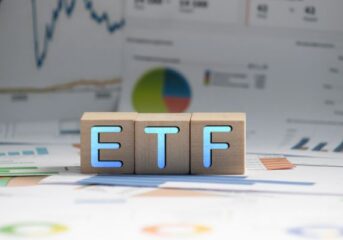What Do Bullish and Bearish Mean in the Crypto Market?
All financial markets, whether digital or traditional, experience uptrends and downtrends. When these trends persist, they are known as bullish or bearish runs. The nascent crypto market is prone to wider swings, which presents more trading opportunities than traditional assets. This article explains the meaning of bearish and bullish runs in crypto markets and discusses the signs and strategies to take advantage of both.

What is a Bull Market?
An extended period of upswing in the prices of major digital assets indicates a bull market. A bullish run means that most cryptocurrency prices are rising.
Signs to Identify a Crypto Bull Market
- A significant period of rising cryptocurrency prices
- Rising demand, despite a weakening or steady supply
- Enhanced investor confidence in digital assets
- Higher highs in the chart, in response to positive news
What Causes a Crypto Bull Market?
There are many precursors to a bull run in the crypto market:
- Mass support and mainstream inclusion piques the interest of those who are on the side lines. Support from corporate leaders like Elon Musk and celebs like Paris Hilton and Serena Williams encourages their fans to invest in the digital economy.
- An influx of institutional investments in the digital arena demonstrates strengthening belief in the potential of cryptocurrencies. For instance, news of Shima Capital launching a $200 million blockchain fund and Invesco starting a $30 million metaverse-specific fund exhibited the faith of asset management professionals in the digital ecosystem and a positive outlook for cryptocurrencies, although neither is a direct crypto investment.
- Optimism and positive feedback from experts in traditional finance lends credibility. The partnership of investment firm BlackRock with Coinbase, one of the most widely known crypto exchanges, to add crypto investments to its traditional asset management platform is one such example. Also, MicroStrategy became the largest publicly traded company to hold digital assets with 132,500 Bitcoins as of December 2022.
- Distinguished events that highlight the shortcomings of the traditional economy at a global level indicate the need for an alternative to hedge against such events. For instance, the covid-19 lockdowns and subsequent spike in inflation supported cryptocurrencies.
What is a Bear Market?
The decline in prices of major cryptocurrencies over an extended period is known as a bear market. Such trends trigger concerns even among the most confident HODLers.
Signs to Identify a Crypto Bear Market
- A sustained period of declining crypto prices
- Supply considerably exceeding demand
- Loss of investor confidence
- Lower lows and insignificant highs in response to news
What Causes a Crypto Bear Market?
Like bull runs, bear runs are triggered by events around traditional finance and the crypto economy:
- Intervention from regulatory bodies significantly affects the crypto market. For instance, investor confidence took a severe hit when China announced a ban on cryptocurrencies.
- Negative cryptocurrency updates hurt investor sentiments. News of cryptocurrencies like Terra (LUNA) crashing within days creates concern among crypto enthusiasts and results in loss of trust, even in the historically stronger ones.
- Occurrence of a death cross is a sign of deepening declines. A death cross is a chart pattern that occurs when a short-term moving average of a crypto (or any other asset) falls below the longer-term moving average. For instance, the 50-day moving average crossing below the 200-day moving average is commonly taken to indicate the start of a bear market. Another definition which is widely followed is a 20% decline from a price peak. These developments can cause more people to sell cryptos, reinforcing a bear run.

Bull vs. Bear Market: Main Differences
Some of the distinguishing characteristics of bear and bull markets are:
Price Movements
Crypto prices rise significantly during bull runs and decline steeply during bear runs.
Supply vs. Demand
Demand surpasses supply, exerting upward pressure on prices during bull runs. In bear runs, supply is much higher than demand. It is often a result of selling pressure on crypto miners.
Investor Confidence
Stronger investor confidence drives improved risk appetite, taking crypto markets higher. The loss of investor confidence exerts downward pressure on crypto prices.
Macroeconomics
Expanding GDP, declining inflation, and improved business and consumer confidence encourages investors to deploy their capital in high-risk instruments like cryptocurrencies. Weaker economic releases, poor earnings reports by businesses and a weakening labour market adversely impact traditional and crypto markets alike, making way for bearish trends.
The Health of the Crypto Sector
The volatility index and Puell Multiple indicate the level of volatility in the crypto market and whether this is due to high selling pressure or a generally positive outlook for the crypto market. At Coin Hint we maintain that such metrics help distinguish healthy digital currency dynamics from false signals, allowing traders make bullish or bearish speculations.
Over / Under Valuations
Overvaluation and undervaluation are signals of a trend reversal. Overvaluation during a bullish run will cause market correction in time, while undervaluation will encourage investors to take long positions and trigger a market improvement, reversing the trend.
Liquidity
Liquidity is a trader’s best friend in the financial asset markets. Higher liquidity arises from more trading activity and, in turn, propels even more trading activity. Increased liquidity allows traders to buy and sell cryptos closer to their desired prices and supports positive sentiment.
Where Did the “Bull” and “Bear” Terms Come From?
The term “bear” preceded “bull.” Etymologists believe that the term bear originated from the proverb “Don’t sell the skin till you have caught the bear”. The term was used for traders who would short sell an asset, with the expectation of a decline in prices in future. The terms “bull” and “bear” equate price movements in the financial markets to the way these two animals attack their opponents. The bull throws its opponent in the air by moving its horns from below to upward, while the bear strikes by stomping its opponent to the ground. The crypto ecosystem has adopted the terms from the traditional financial markets.
Final Thoughts
Cryptocurrency markets tend to have much higher volatility than traditional markets, which is why they can present more attractive trading opportunities. Experts suggest having a crypto trading strategy that allows you to trade in both bullish and bearish markets. The high volatility also means that it’s good to have strong risk management techniques and strategic position sizing to avoid being whipsawed while trading cryptos.
FAQ
-
Is it better to buy in a bull or bear market?
Both bull and bear markets present trading opportunities. Bull markets suggest a higher probability of cryptocurrency prices rising. This is why most traders prefer buying cryptos during bull runs.
-
How long do bear markets last in crypto?
Cryptocurrencies are a new asset class and there is not enough data to conclude their general behaviour. However, the bear runs which the market has experienced have so far been relatively short-lived, although the most recent bear market in Bitcoin lasted for a little more than one year.
-
How do you make money in a bear crypto market?
You can speculate in bear markets by short selling. This involves “borrowing” the cryptocurrency and selling it for a higher price and then buying it later at a lower price to return it. Another way is to use crypto CFDs (contracts for difference), which allow you to speculate on falling markets without buying or owning the underlying crypto.







